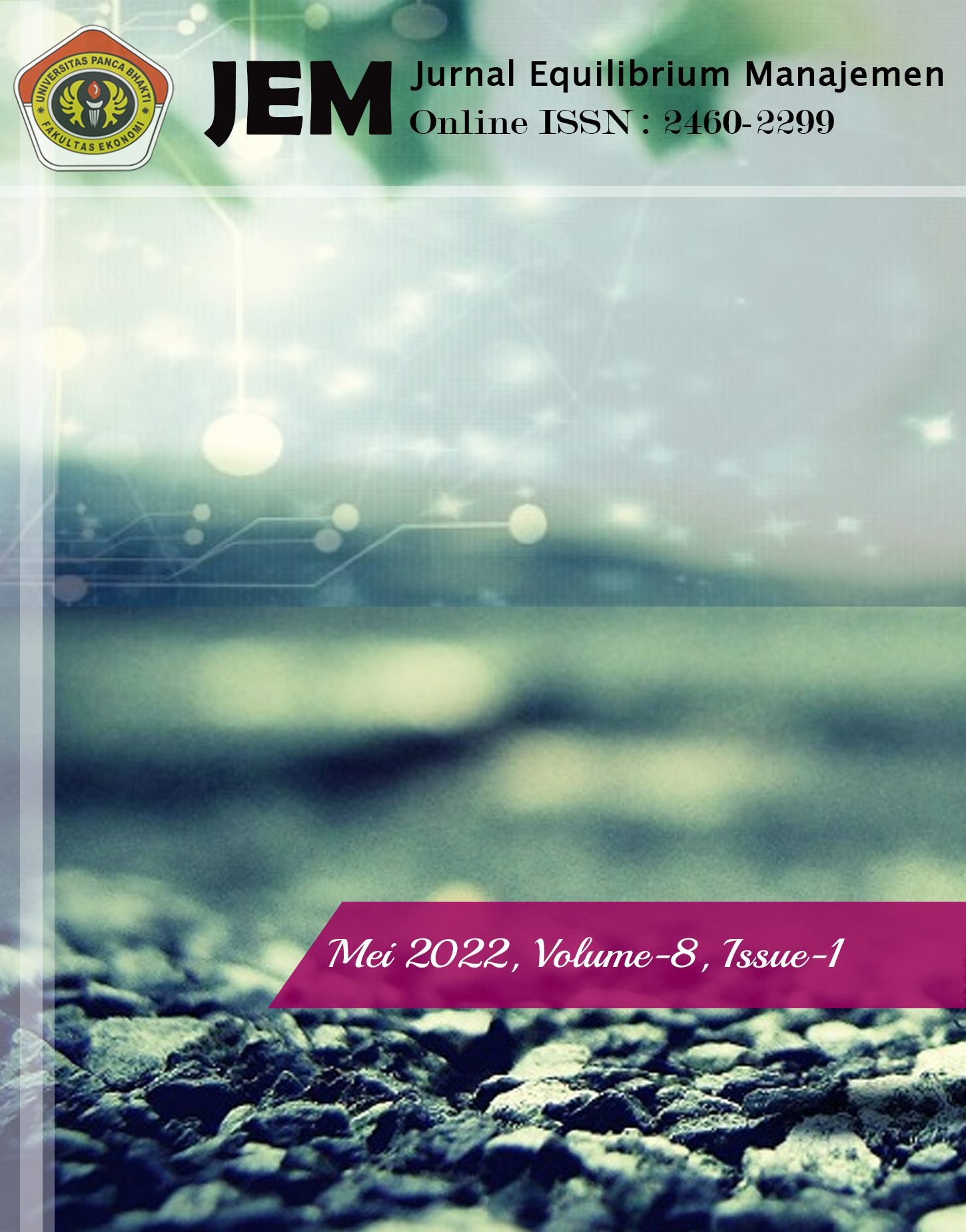ANALISIS FAKTOR – FAKTOR MOTIVASI KERJA KARYAWAN DI PT. MITRA KARYA SENTOSA PONTIANAK
Main Article Content
Abstract
The emergence of many companies makes the competition more intense for the sake of the company's sustainability in the future. So the company must create innovation or company advantage over other companies. The company's performance can not be separated from the human resources in it with good performance will succeed in mastering the market share. Employee performance is inseparable from the existence of factors that can affect a person's performance, one of which is motivation. So that this research focuses on the analysis of the motivational factors of the employees of PT. Mitra Karya Sentosa Pontianak. The data resources used primary data that obtained by distributing questionnaires for 35 respondents, which was tested using the analysis of The Needs Theory from David Meclelland. The results of the research explain that the motivation for the need for achievement and togetherness is more needed in groups of 1 to 7 years of service. However, the need for power is not really needed because it has a relatively low average and is not much different between other groups.
Article Details

This work is licensed under a Creative Commons Attribution-NonCommercial 4.0 International License.
Copyright (c) 2021 Jurnal Equalibrium

This work is licensed under a Creative Commons Attribution-NonCommercial 4.0 International License.
Jurnal Equalibrium is licensed under a Creative Commons Attribution-NonCommercial 4.0 International License.
References
Arikunto, S. (2012). Prosedur Penelitian Suatu Pendekatan Praktis (Revisi VI). PT. Rineka Cipta.
Azwar, S. (2012). Reliabilitas dan Validitas. Yogyakarta: Pustaka Pelajar. Furchan, A. (2004). Pengantar Penelitian Dalam Pendidikan. Pustaka Pelajar.
Yogyakarta: Badan Penerbit Universitas Diponogoro.
Ghozali, I. (2016). Aplikasi Analisis Multivariete Dengan Program IBM SPSS. Semarang: Badan Penerbit Universitas Diponogoro.
Ghozali, I. (2012). Aplikasi Analisis Multivariete Dengan Program IBM SPSS.
Ghozali, I. (2013). Aplikasi Analisis Multivariete Dengan Program SPSS 19 Edisi Kelima. Semarang: Badan Penerbit Universitas Diponogoro
Indrasari, M. (2017). Kepuasan Kerja dan Kinerja Karyawan (1st ed.). Indomedia Pustaka.
Janie, D. N. A. (2012). Statistik Deskriptif dan Regresi Linier Berganda Dengan SPSS (A. Ika (ed.); 1st ed.). Semarang University Press.
Kerlinger. (2006). Asas-Asas Penelitian Behavior. Edisi 3, Cetakan 7. Yogyakarta: Gadjah Mada University Press.
Kuncoro, Mudrajad. (2013). Metode Riset Untuk Bisnis dan Ekonomi. Jakarta: Erlangga.
Mangkunegara, Anwar Prabu. (2000). Manajemen Sumber Daya Manusia Perusahaan. Bandung: Remaja Rosda Karya.
Mangkunegara, Anwar Prabu. (2013). Manajemen Sumber Daya Manusia Perusahaan. Bandung: Remaja Rosda Karya.
Mukminin, A., Habibi, A., Prasojo, L. D., & Yuliana, L. (2019). Manajemen Sumber Daya Manusia dalam Pendidikan (Bhujangga Ayu P, N. Munthe, A. Tahalli, & N. Hariyati (eds.); 1st ed.). UNY Press.
Sugiyono. (2010). Metode Penelitian Kuantitatif, Kualitatif, dan R&D. Bandung: Alfabeta.
Sugiyono. (2011). Metode penelitian kuantitatif, kualitatif dan R&D. Bandung: Alfabeta.
Sugiyono. (2016). Metode Penelitian Kuantitatif, Kualitatif, dan R&D. Bandung: Alfabeta.
Sulastiyono, A. (2011). Manajemen Penyelenggaraan Hotel: Manajemen Hotel Bandung: Alfabeta.
Sutrisno, E. (2017). Manajemen Sumber Daya Manusia. Kencana, Jakarta. Umar, H.
Riset Sumber Daya Manusia. Jakarta: PT. SUN.
Wardan, K. (2020). Motivasi Kerja Guru Dalam Pembelajaran. Media Sains Indonesia

